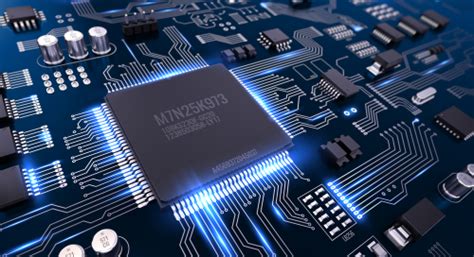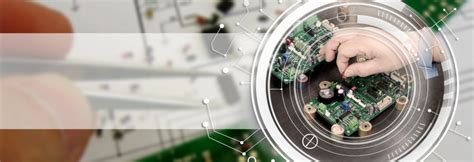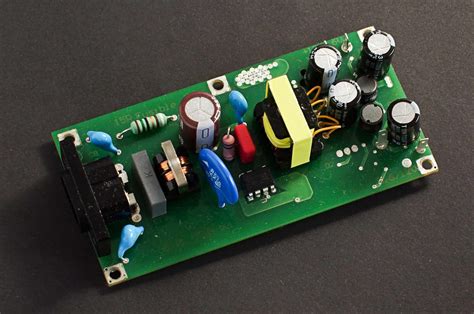Introduction to Agile PCB Design
Agile PCB design is a modern approach to designing printed circuit boards that emphasizes flexibility, collaboration, and rapid iteration. This methodology has gained significant traction in recent years as engineers strive to keep pace with the ever-evolving demands of the electronics industry. By adopting agile principles, PCB designers can create high-quality boards more efficiently while adapting to changing requirements and customer needs.
In this article, we will explore the key concepts of agile PCB design, including engineering bill materials (EBM), and how they can be applied to streamline the design process and improve overall product quality.
Understanding Engineering Bill Materials (EBM)
What is an Engineering Bill Material?
An engineering bill material (EBM) is a comprehensive list of all the components, materials, and processes required to manufacture a product. In the context of PCB design, an EBM includes all the parts, such as resistors, capacitors, integrated circuits, and connectors, as well as the substrate material, solder mask, and silkscreen.
The EBM serves as a central repository of information for the entire design team, ensuring that everyone has access to the most up-to-date component data. This helps to minimize errors and inconsistencies throughout the design process.
Benefits of Using an EBM in Agile PCB Design
- Improved collaboration: An EBM provides a single source of truth for all team members, facilitating better communication and collaboration between designers, engineers, and manufacturers.
- Faster iterations: With an EBM, designers can quickly update component information and propagate changes throughout the design, enabling faster iterations and reducing the time required to incorporate feedback.
- Reduced errors: By maintaining a centralized database of component information, an EBM helps to minimize the risk of errors and inconsistencies that can arise when working with outdated or incorrect data.
- Better supply chain management: An EBM can be used to track component availability, lead times, and pricing, allowing designers to make informed decisions about part selection and avoid potential supply chain issues.

Agile PCB Design Principles
Embracing Change
One of the core principles of agile PCB design is embracing change. In traditional design methodologies, changes to the design can be costly and time-consuming, often requiring significant rework. Agile PCB design, on the other hand, recognizes that change is an inevitable part of the design process and seeks to accommodate it through flexible and adaptable workflows.
By using modular design techniques and maintaining a clear separation of concerns, agile PCB designers can create boards that are easier to modify and update as requirements evolve. This approach minimizes the impact of changes and allows for faster iteration cycles.
Collaboration and Communication
Effective collaboration and communication are essential for successful agile PCB design. Agile teams work closely together, sharing knowledge and expertise to solve problems and make informed decisions. Regular meetings, such as daily stand-ups and design reviews, help to keep everyone on the same page and ensure that any issues or concerns are addressed in a timely manner.
Tools like version control systems and collaborative design platforms can further enhance communication and collaboration by providing a centralized repository for design files and enabling real-time collaboration between team members.
Continuous Integration and Testing
Continuous integration and testing are key practices in agile PCB design. By integrating changes into the main design branch frequently and running automated tests at each stage of the design process, teams can catch errors and issues early, before they become more costly and time-consuming to fix.
Automated testing can include checks for design rule violations, component placement, signal integrity, and thermal performance. By catching these issues early, designers can avoid costly redesigns and ensure that the final product meets all performance and quality requirements.
Incremental Delivery
Agile PCB design emphasizes incremental delivery, meaning that designs are developed and released in small, manageable chunks rather than as a single, monolithic project. This approach allows for faster feedback and iteration, as well as greater flexibility in responding to changing requirements.
By delivering working prototypes and minimum viable products (MVPs) at regular intervals, agile PCB designers can gather valuable feedback from stakeholders and customers, allowing them to refine and improve the design based on real-world usage and performance data.

Implementing Agile PCB Design
Choosing the Right Tools
To successfully implement agile PCB design, it’s essential to choose the right tools and platforms. A modern, cloud-based PCB design tool that supports collaboration, version control, and automated testing can greatly enhance the efficiency and effectiveness of an agile design team.
Some key features to look for in an agile PCB design tool include:
- Real-time collaboration and communication
- Integrated version control and change management
- Automated design rule checks and testing
- Comprehensive libraries and component management
- Integration with other tools and platforms, such as EDA and PLM systems
Establishing a Collaborative Design Process
Establishing a collaborative design process is crucial for successful agile PCB design. This involves defining clear roles and responsibilities for each team member, setting up regular communication channels and meetings, and establishing a shared vision and goals for the project.
Some best practices for establishing a collaborative design process include:
- Define clear roles and responsibilities: Ensure that each team member understands their role and responsibilities within the project, and how they contribute to the overall success of the design.
- Set up regular communication channels: Establish regular communication channels, such as daily stand-ups, design reviews, and retrospectives, to keep everyone informed and aligned.
- Foster a culture of transparency and trust: Encourage open and honest communication, and create an environment where team members feel comfortable sharing ideas, concerns, and feedback.
- Use collaborative tools and platforms: Leverage collaborative tools and platforms, such as version control systems and design review tools, to facilitate communication and collaboration among team members.
Measuring Success and Continuously Improving
To ensure the success of an agile PCB design process, it’s essential to measure progress and continuously improve based on feedback and lessons learned. Some key metrics to track include:
- Time to market
- Number of iterations required to complete the design
- Defect density and quality metrics
- Customer satisfaction and feedback
By regularly measuring these metrics and conducting retrospectives to identify areas for improvement, agile PCB design teams can continuously refine their processes and deliver higher-quality products more efficiently.

Case Studies
Company A: Streamlining Design with Agile Principles
Company A, a leading manufacturer of consumer electronics, adopted agile PCB design principles to streamline their design process and reduce time to market. By implementing a collaborative design platform and establishing a clear EBM, the company was able to:
- Reduce design iterations by 40%
- Decrease time to market by 25%
- Improve overall product quality by catching and fixing errors early in the design process
Company B: Enhancing Collaboration and Communication
Company B, a global automotive supplier, faced challenges with collaboration and communication across their distributed design teams. By adopting agile PCB design practices and tools, the company was able to:
- Improve collaboration and communication between design teams in different locations
- Reduce the number of design errors and inconsistencies
- Increase overall design efficiency by 30%
Best Practices for Agile PCB Design
- Start with a clear vision and requirements: Before beginning the design process, ensure that all stakeholders have a clear understanding of the project goals, requirements, and constraints.
- Break the design into manageable chunks: Divide the design into smaller, manageable tasks that can be completed within a single iteration or sprint.
- Prioritize regular communication and collaboration: Establish regular communication channels and meetings to keep everyone informed and aligned throughout the design process.
- Leverage automated testing and verification: Use automated testing and verification tools to catch errors and issues early in the design process, reducing the need for costly rework later on.
- Continuously measure and improve: Regularly measure key metrics and conduct retrospectives to identify areas for improvement and refine the design process over time.
Frequently Asked Questions (FAQ)
-
What is the difference between agile PCB design and traditional design methodologies?
Agile PCB design emphasizes flexibility, collaboration, and rapid iteration, while traditional design methodologies are more linear and rigid. Agile PCB design allows for faster incorporation of changes and feedback, leading to more efficient and adaptable designs. -
How does an engineering bill material (EBM) support agile PCB design?
An EBM serves as a central repository of component information, ensuring that all team members have access to the most up-to-date data. This helps to minimize errors, improve collaboration, and enable faster design iterations. -
What are some key features to look for in an agile PCB design tool?
Some key features to look for include real-time collaboration, integrated version control, automated testing and verification, comprehensive libraries, and integration with other tools and platforms. -
How can I measure the success of my agile PCB design process?
Some key metrics to track include time to market, number of iterations required, defect density, and customer satisfaction. Regularly measuring these metrics and conducting retrospectives can help identify areas for improvement and ensure continuous process refinement. -
What are some best practices for implementing agile PCB design in my organization?
Best practices include starting with a clear vision and requirements, breaking the design into manageable chunks, prioritizing regular communication and collaboration, leveraging automated testing and verification, and continuously measuring and improving the process.
Conclusion
Agile PCB design is a powerful approach that can help organizations create high-quality printed circuit boards more efficiently and effectively. By embracing change, fostering collaboration and communication, leveraging continuous integration and testing, and delivering incrementally, agile PCB designers can stay ahead of the curve in an ever-evolving industry.
Implementing agile PCB design requires choosing the right tools, establishing a collaborative design process, and continuously measuring and improving based on feedback and lessons learned. By following best practices and learning from the success stories of others, organizations can unlock the full potential of agile PCB design and deliver innovative, high-quality products to market faster than ever before.

No responses yet